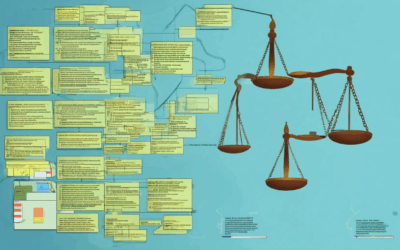Financial compliance is a cornerstone of effective operations for charitable organizations, ensuring transparency, accountability, and trustworthiness to donors, stakeholders, and the public. For 501(c)(3) organizations, adherence to financial regulations and reporting standards is not just a legal requirement but a moral imperative to uphold their mission-driven goals. This comprehensive guide dives into the essential aspects of financial compliance for charities, offering actionable insights and practical strategies to navigate the complexities of nonprofit accounting, reporting, and compliance. By understanding the key requirements, best practices, and resources available, charities can strengthen their financial foundation and maintain their reputation as trusted entities. Whether you’re new to the realm of financial compliance or looking to refine your existing processes, this guide provides a clear roadmap to success.

Financial Reporting Requirements for 501c3 Organizations
As a 501c3 organization, your financial reporting obligations are crucial for maintaining transparency and compliance with federal and state regulations. Here’s a breakdown of the key requirements:
- Form 990 Annual Information Return : All 501c3 organizations must file this form with the IRS. It includes detailed financial information, program activities, governance details, and compliance updates.
- Form 990-N for Small Organizations**: If your organization meets specific criteria (e.g., gross receipts below $50,000), you may file Form 990-N instead of the full Form 990.
- Form 990-P Political Activities**: If your organization engages in political activities, you must file Form 990-P to disclose these activities and ensure compliance with IRS rules.
- Forms 1099 Series**: Report payments made to vendors, independent contractors, and employees. Recipients receiving $600 or more must receive a Form 1099-MISC or 1099-NEC.
- State Reporting Requirements**: Many states require similar financial reporting, often with additional disclosures. Check your state’s specific requirements.
- Schedule B Contributions from Foreign Sources : If your organization receives contributions from foreign sources, complete Schedule B to report these transactions.
- Electronic Filing**: Most tax forms, including Form 990, must be filed electronically through the IRS’s online system.
Remember, public charities generally have more reporting requirements than private foundations. Ensure all filings are completed accurately and on time to maintain your tax-exempt status and comply with legal obligations.
The 33% Rule for Nonprofits
The 33% rule for nonprofits pertains to the percentage of support received from the general public or government entities. Here’s a breakdown:
- Threshold Definition : Nonprofits are categorized based on the percentage of their total support originating from the public or government. Specifically, if an organization receives more than 10% but less than 33.333…% (one-third) of its support from these sources, it may qualify as a public charity under certain conditions.
- Public Charity Classification : To maintain public charity status, the nonprofit must demonstrate that, considering all facts and circumstances, a substantial portion of its support comes from public sources. This is typically documented on IRS Form 990, particularly in Schedule A and Schedule B, which detail contributions and grants.
- Compliance and Consultation : Nonprofits falling into this range should consult tax professionals to ensure compliance with IRS requirements. Proper classification is crucial to avoid penalties and maintain tax-exempt status.
This rule underscores the importance of understanding funding sources and ensuring adherence to IRS guidelines for nonprofits.

What Do 501(c)(3) Financial Disclosures Require?
501(c)(3) organizations, which are tax-exempt nonprofits, are legally obligated to disclose specific financial records. These requirements aim to ensure transparency and accountability to donors, the public, and the IRS.
- Annual Information Returns (Form 990): Nonprofits must file Form 990, which details their financial activities, for the past three consecutive fiscal years. This form includes information on revenue, expenses, assets, liabilities, and key officers.
- Application for Tax-Exemption: The original application submitted to the IRS for tax-exempt status, along with the corresponding determination letter, must also be disclosed. This document outlines the organization’s purpose and qualifies it for tax-exempt status.
- Public Availability: These documents must be made available to the public upon request. Transparency is crucial for maintaining trust and credibility with donors and stakeholders.
- State Requirements: In addition to federal requirements, many states may impose their own rules regarding financial disclosures. It’s essential to review state-specific regulations to ensure compliance.
Failure to comply with these disclosure requirements can result in penalties and may jeopardize the organization’s tax-exempt status. Proper management and accessibility of these documents are vital for maintaining operational integrity and public trust.

What is Nonprofit Compliance?
Nonprofit compliance refers to the process of ensuring that a nonprofit organization adheres to the legal, regulatory, and ethical standards required to operate effectively and remain tax-exempt. Compliance ensures that nonprofits fulfill their mission while maintaining trust with donors, stakeholders, and the public.
Key Aspects of Nonprofit Compliance
- Legal Registration
Nonprofits must register with the appropriate state agency to obtain tax-exempt status. This typically involves filing forms with the IRS, such as Form 1023 for 501(c)(3) status, and registering with the state where the nonprofit operates. - Tax-Exempt Status Maintenance
Once registered, nonprofits must maintain their tax-exempt status by complying with IRS regulations. This includes filing annual tax returns (Form 990) and ensuring all activities align with the organization’s exempt purpose. - Governance and Leadership
Nonprofits must establish a governing body, typically a board of directors, responsible for overseeing operations and ensuring compliance with legal requirements. The board must also regularly monitor the organization’s programs and finances. - Financial Oversight
Nonprofits must maintain transparent financial records and ensure proper accounting practices. This includes regular audits, financial reporting, and maintaining records accessible to stakeholders. - Program Monitoring
Nonprofits must evaluate the effectiveness of their programs and ensure they align with their mission. This may involve collecting feedback, measuring outcomes, and making necessary adjustments. - Reporting Requirements
Nonprofits are often required to file annual reports with regulators and share financial and programmatic updates with donors. Public disclosure of certain information, such as salaries of top executives, is also mandatory in many jurisdictions.
Staying Compliant
To maintain compliance, nonprofits should:
- Stay informed about changes in laws and regulations affecting the sector.
- Regularly review and update their bylaws and policies.
- Engage in continuous education and training for staff and volunteers.
- Utilize resources from trusted organizations like IRS , GuideStar , and National Council of Nonprofits .
By prioritizing compliance, nonprofits can operate smoothly, attract donations, and maximize their impact while maintaining public trust.
GAAP Requirements for Nonprofits
Nonprofit organizations adhere to specific GAAP (Generally Accepted Accounting Principles) requirements to ensure transparency and accountability. Here’s a breakdown of the key GAAP requirements for nonprofits:
- Fund Accounting : Nonprofits must maintain detailed records of their funds, including unrestricted and restricted funds. This involves tracking contributions, grants, and program expenditures accurately.
- Financial Statements : Nonprofits are required to prepare comprehensive financial statements, including the statement of financial position, statement of activities, and statement of cash flows. These documents detail program costs, administrative expenses, and overall financial health.
- Revenue Recognition : Donations and grants are recognized as revenue upon receipt, not when they are used. This ensures timely and accurate reporting of income sources.
- Compliance Reporting : Nonprofits must submit reports to regulatory bodies, such as the IRS in the U.S., which require adherence to GAAP principles for accurate financial reporting.
- Internal Controls : Effective internal controls are necessary to safeguard assets and ensure funds are used appropriately, minimizing the risk of fraud and maintaining donor trust.
By following these GAAP requirements, nonprofits demonstrate accountability and transparency, which are vital for maintaining public trust and operational integrity.

What is 501 Compliance?
501 compliance refers to the requirement for federal agencies in the United States to adhere to specific hiring goals outlined under Section 501 of the Rehabilitation Act of 1973. This section prohibits discrimination against qualified individuals with disabilities and mandates that federal agencies aim to have a workforce that reflects the diversity of the population they serve.
Key Points:
- Established in 1973 : Section 501 was created to ensure equal employment opportunities for individuals with disabilities.
- Hiring Goals : Federal agencies are required to establish goals for hiring individuals with disabilities. Specifically:
- At least 12% of the workforce must consist of individuals with disabilities.
- At least 2% of the workforce must consist of individuals with targeted disabilities (e.g., individuals who have two or more severe disabilities).
- Promotes Diversity and Inclusion : These goals aim to create a more inclusive workplace, reflecting the diverse needs and abilities of society.
- Accountability : Agencies must regularly track their progress toward meeting these goals and report on their efforts to Congress.
- Impact : By promoting employment opportunities for individuals with disabilities, Section 501 compliance supports social equity and contributes to a more inclusive society.
This requirement underscores the importance of diversity and inclusion in federal workplaces, ensuring that all individuals have access to fair employment opportunities.
Conclusion:
501 compliance is a vital aspect of federal employment policies, aiming to foster equity and diversity in the workforce while ensuring accountability through measurable goals.





0 Comments